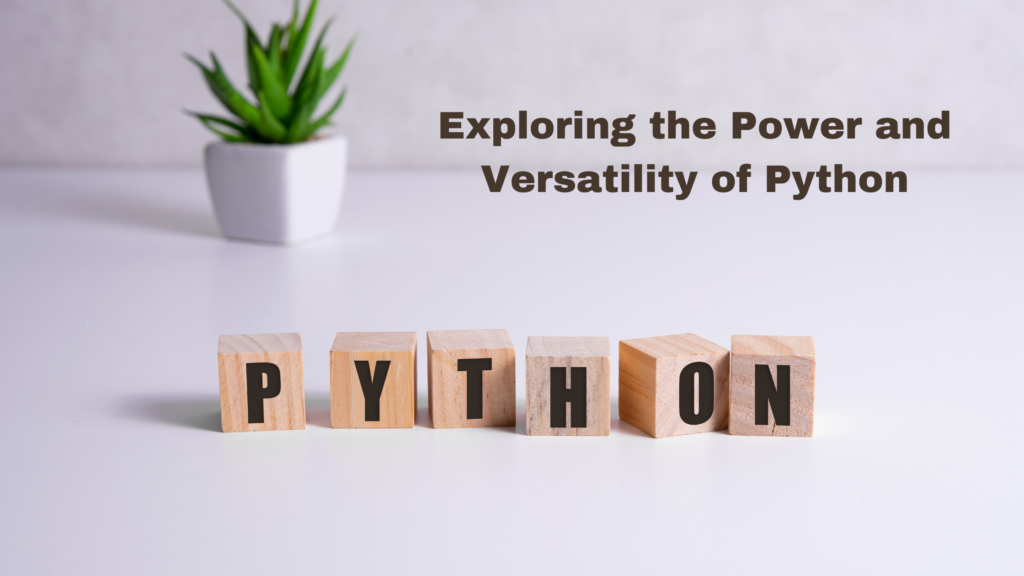Python for Everyone: Understanding its Versatility and Wide Application

Introduction:
Python has become a powerhouse in the world of programming, known for its simplicity, readability, and versatility. With its clean syntax and extensive libraries, Python has gained popularity across various domains, from web development to data analysis and artificial intelligence. In this blog post, we will delve into the features and advantages of Python, highlighting why it has become a go-to language for developers worldwide.
Easy to Learn and Read:
One of the key reasons for Python’s popularity is its simplicity. The language emphasizes readability and uses clean, intuitive syntax, making it an excellent choice for beginners and experienced developers alike. Python’s code readability encourages collaborative coding and enhances the maintainability of projects.
Vast Ecosystem of Libraries and Frameworks:
Python boasts a rich collection of libraries and frameworks that cater to diverse needs. The Python Package Index (PyPI) hosts thousands of open-source packages, allowing developers to leverage existing solutions and accelerate development. Popular libraries such as NumPy, Pandas, and Matplotlib provide powerful tools for data analysis and scientific computing. Additionally, frameworks like Django and Flask make web development a breeze.
Versatility across Domains:
Python’s versatility allows it to be used in a wide range of applications. It serves as a scripting language for automation, enables rapid prototyping, and supports full-scale enterprise applications. Whether you’re developing web applications, building machine learning models, or scripting tasks, Python can handle it all.
Strong Community Support:
Python has a vibrant and supportive community that contributes to its growth and evolution. The community offers extensive documentation, online forums, and resources to assist developers at all skill levels. This collective knowledge makes troubleshooting and learning new concepts easier, fostering continuous improvement and innovation.
Data Analysis and Machine Learning:
Python has emerged as a leading language for data analysis and machine learning. Libraries like NumPy and Pandas provide efficient data manipulation and analysis capabilities, while scikit-learn and TensorFlow offer powerful machine learning tools. With Python, developers can perform tasks such as data cleaning, visualization, and training sophisticated models with relative ease.
Web Development with Django and Flask:
Python is an excellent choice for web development, thanks to frameworks like Django and Flask. Django provides a comprehensive, batteries-included approach for building robust web applications. Flask, on the other hand, offers a lightweight and flexible framework, ideal for small to medium-sized projects. Both frameworks follow Python’s philosophy of simplicity and allow developers to create scalable and secure web applications rapidly.
Automation and Scripting:
Python’s ease of use and cross-platform compatibility make it a preferred language for automation and scripting tasks. From automating repetitive processes to writing system administration scripts, Python’s concise syntax and extensive standard library make it an efficient tool. It simplifies tasks such as file manipulation, data parsing, and interacting with external services.
Conclusion:
Python’s popularity continues to soar, driven by its simplicity, versatility, and extensive ecosystem. With its easy-to-read syntax and vast libraries, Python empowers developers across domains, from web development to data analysis and machine learning. Its strong community support and commitment to code readability make it an excellent choice for both beginners and experienced programmers. Whether you’re just starting your programming journey or expanding your skill set, Python is a language that can open doors to a world of possibilities.

Leave a Reply